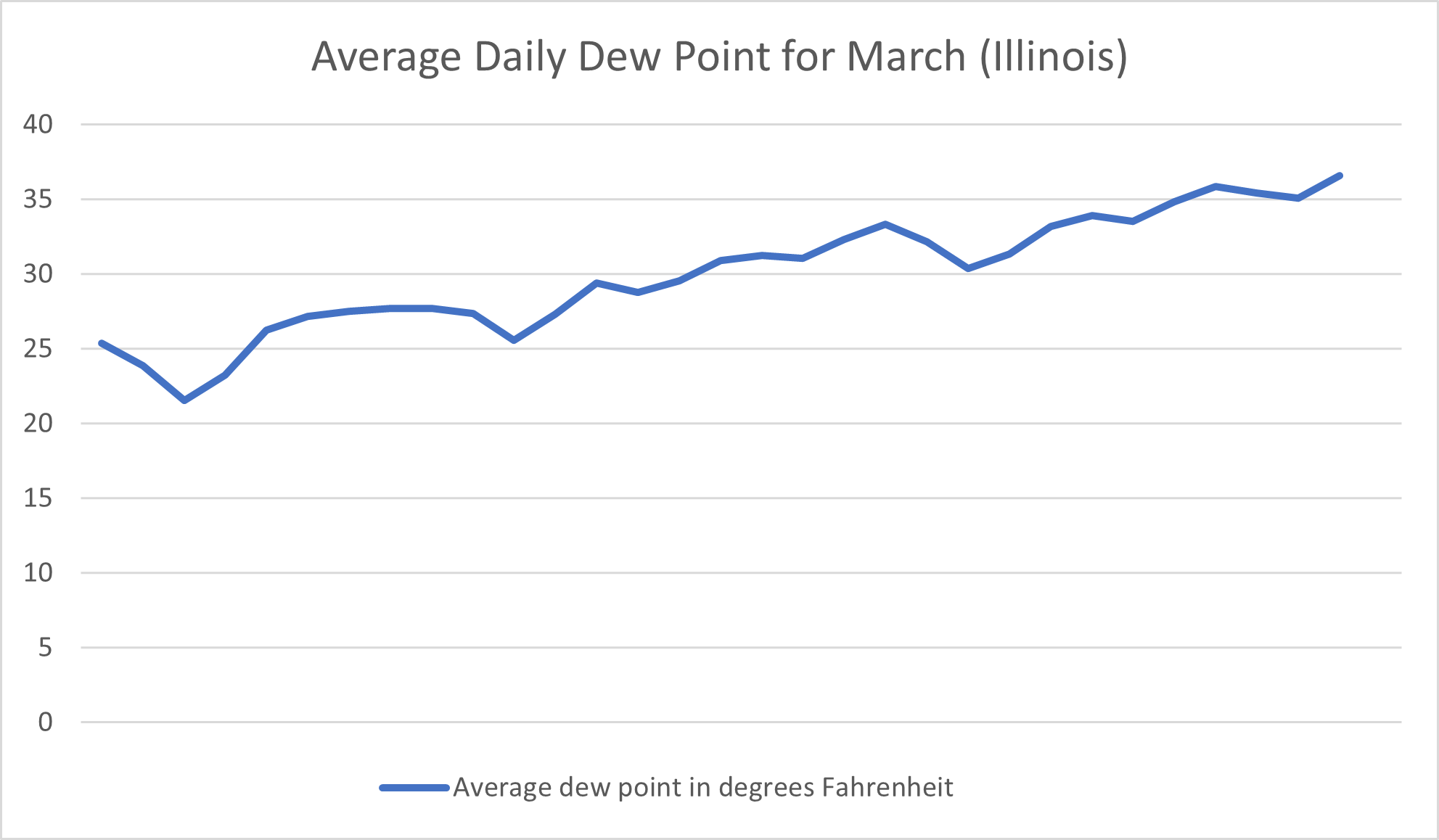The title doesn’t work as well as Beware the Ides of March, but the sentiment is the same. If we experience dew point temperatures in the 50s or 60s in March, just be wary that the chance for severe weather is high.
What is the dew point?
Air can only hold so much water vapor, which is the gas form of water. When air reaches a temperature where it is holding as much water vapor as it can possibly hold, the air is said to be saturated. The temperature this occurs at is called the dew point temperature. A more common way of talking about dew point is when relatively humidity is at 100%. Warmer air can hold more water vapor, cold air can’t hold as much.
Dew points are a great indicator of how much water vapor is actually in the air. When dew point temperatures are low, that means the air is not holding much water vapor. Higher dew points mean more water vapor is present. Water vapor when it condenses adds heat to the surrounding air. In situations where thunderstorms may develop, having high dew points can increase the chances of thunderstorms
As the graph from State Climatologist Trent Ford shows, March average dew points for Illinois start in the low 20s and slowly work up to the mid 30s by the end of the month. Dew points this low typically keep a lid on severe weather, since low dew points mean the air is not holding much moisture.
What conditions may increase the chances for thunderstorms?
However, March is a big transition month from winter to spring. Warm juicy air masses from the Gulf of Mexico can start pushing into the state, raising the dew point temperature. That by itself doesn’t cause thunderstorms, but if there is a strong cold air mass that moves in and the Gulf air becomes unstable, or in other words wants to move to higher elevations, that juicy air will quickly cool to the dew point temperature as it moves upward, condense to liquid water, release heat and have an even greater tendency to move upward. Thunderstorms often form under these conditions
So, you should pay attention to is the dew point. If you see dew points in March in the 50- to 60-degree range, that means there is a lot of moisture in the air, and the chances for thunderstorms are pretty high.
As the air naturally warms during April and on into summer, normal dew points will get into the 50- and 60-degree range, and those readings won’t be a problem.
ABOUT THE BLOG: All About Weather is a blog by Duane Friend that explores the environment, climate, and weather topics for Illinois. Get in-depth information about things your weather app doesn't cover from summer droughts to shifting weather patterns. Never miss a new post! Sign up for our email list.
MEET THE AUTHOR: Duane Friend is an energy and environmental stewardship educator with University of Illinois Extension, serving the organization in many roles since 1993. Duane provides information and educational programs to adult and youth audiences in the areas of soil quality, weather and climate, energy conservation, and disaster preparedness. These programs provide practical solutions for families, farms, and communities. He assists families in creating a household emergency plan, farmers with the implementation of soil management and conservation practices, and local government officials and business owners with energy conservation techniques.
